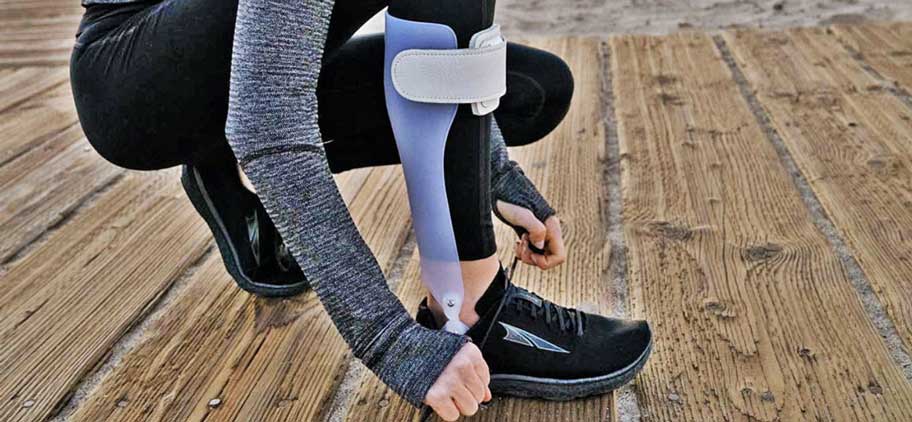
In four short articles this series has covered a significant amount of material on the very basics of what is needed to know about ordering an AFO.
Now lets dissect what you may need to have and do on the day the patient comes to the office for dispensing and beyond.
Does the patient have the proper footwear to fit the AFO and their foot?
This discussion should have occurred every time you saw the patient and they should be reminded of this discussion when they are contacted to set up their fitting appointment. Don’t term the appointment a dispensing appointment, but rather a preliminary fitting appointment. If you don’t dispense shoes, work with a local pedorthist who can work with the patient prior to receiving or just shortly after receiving their AFO (certainly prior to is preferred).
Do you have or have easy access to the requisite equipment and materials to adjust AFO?
The basics include a grinding wheel, heat gun, cement and accommodative materials in sheets (e.g. poron, ppt, etc. of various durometers and thicknesses) and heavy-duty scissors. These are no different than what should be within your armamentarium for repairing and adjusting custom foot orthosis. With these equipment and materials, most minor adjustments can be made in the office. This avoids sending the device back to the fabricator which often results in significant delivery delays.
Be sure your patient understands adjustments on AFO are often the case and there may be many times where this must be done slowly and repeatedly over time. Adjusting one area at a time is strongly encouraged as opposed to adjusting many areas at once. Not showing frustration and offering reassurance is contagious. Patients who are used to one and done with custom foot orthotics, or where custom foot orthotics or AFOs have failed are especially vulnerable to frustration with AFO which need multiple adjustments.
Be sure and carefully document all adjustments in a repair record so you have a record of what was previously performed. If similar problems occur across multiple patient consider that your scanning or casting methods may be flawed. Seeking assistance from a more seasoned colleague or obtaining a consultation from one of our experts at KevinRoot Labs is strongly encouraged.
Leaving this subject on a very positive note:
Custom AFO’s can often reimburse in excess of $1500 and costing less than $500. With most foot surgeries reimbursing less than 1/3 of that, and are saddled with a 90-day global period and significant potential liability. While there are certainly speed bumps along the way of becoming a hardened and experienced orthotic provider, the same is true for invasive surgical procedures as there is no guarantee that surgery will attain your goals and more importantly the goals of your patients.
Our patients deserve giving them everything we have in our toolbox to resolve their foot and ankle issues. Why resort to surgery first when a more conservative non-invasive approach may resolve the patient’s problem without the risks involved with surgery?






